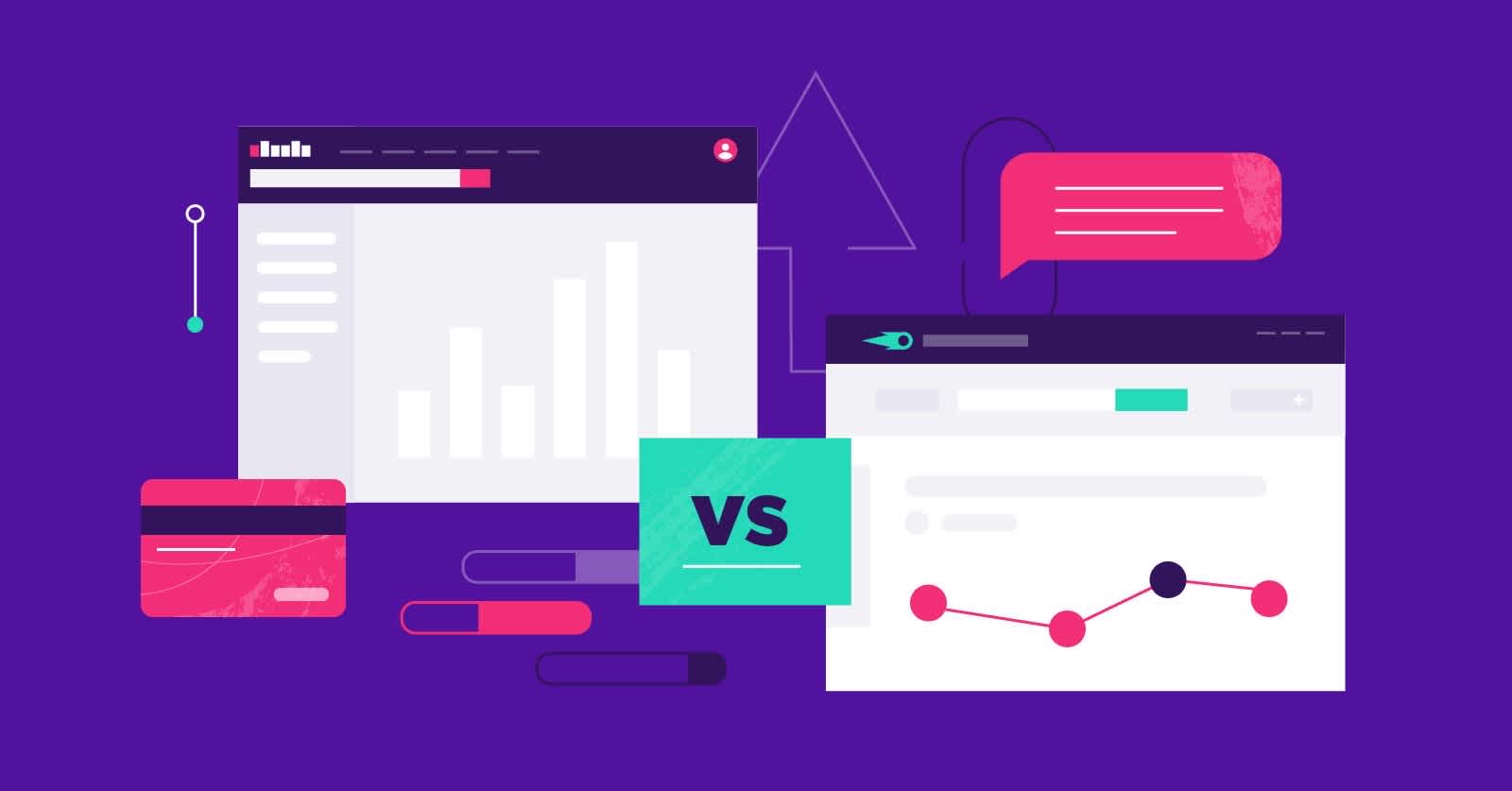
Infographics are powerful tools for presenting complex information in an easy-to-understand format. They're engaging, efficient, and appealing to the eye. But, could you be doing more to enhance their search engine potential? By applying Search Engine Optimization (SEO) to your infographics, you can boost your overall search rankings, attract more traffic to your site, and engender increased audience engagement. In this guide, we'll explore the inner workings of 'SEO for Infographics', uncovering effective strategies, tips, and best practices to supercharge your infographic SEO game.
What Does SEO for Infographics Mean?
SEO for infographics refers to the practice of optimizing these visual assets for better visibility in search engine results. It involves implementing a variety of SEO techniques - including keyword integration, image optimization, and unique title tags - to ensure that infographics rank highly on search engines and attract a larger audience.
Why is SEO for Infographics Important?
Here are a few reasons why SEO for infographics matters in your digital marketing:
Improved Search Rankings: With proper SEO, your infographics can rank higher in search engine results, making them more visible to users and increasing your website traffic.
Greater Engagement: Infographics, by their nature, are engaging. Combining this with SEO can boost user interaction and engagement with your content.
Increased Shareability: Well-optimized infographics are more likely to be shared on social media or other platforms, extending your content's range, and improving your website's SEO.
Enhanced User Experience: Clear, visually appealing infographics that are easy to find and load quickly contribute to a positive user experience.
Essential SEO Strategies For Infographics
Knowing what SEO for infographics entails, you might wonder, "How can I improve my infographic's SEO?" Here are key strategies you should consider.
Keyword Optimization
Keyword optimization is a fundamental facet of SEO. By incorporating relevant keywords in your infographic content, ALT text, caption, and file name, you make it easier for search engines to understand and index your infographic, thus improving its visibility.
Remember to research your keywords beforehand, focusing on those with high search volume and low competition.
Unique Title Tags and Meta Descriptions
Each infographic on your website should have a unique title tag and meta description that reflects its content. This not only helps search engines understand what your infographic is about but also encourages users to click on your link when it shows up in search engine results.
Infographic Alt Text and Image File Naming
Search engines can't process images like humans do. Instead, they rely on critical texts associated with the image: the image file name and the ALT text. Ensure that both are descriptive, use your target keyword, and accurately reflect your infographic.
Embed Code
Providing an embed code for your infographic makes it easy for other websites or blogs to share your content, resulting in precious backlinks which are a great boost for SEO.
Designing SEO-friendly Infographics
Creating an infographic that is appealing and SEO friendly is a craft. Here are critical factors to consider:
Quality Over Quantity
It's important to focus on the quality of the content in your infographic instead of just overloading it with information. Users and search engines appreciate well-researched, relevant, and precise content.
Mobile Responsiveness
With the high percentage of users viewing content on mobile devices, creating a mobile-friendly infographic is crucial. It enhances usability and signals to search engine algorithms that your site is user-friendly.
Load Time
A high-resolution image isn’t worth much if it takes too long to load. Compress your infographic images to enhance page load speed, positively impacting user experience—and consequently, SEO.
Accessibility
Ensure your infographic is as accessible as possible. Use high-contrast colors, keep the design simple to understand, and always provide a text alternative.
Promote Your Infographics
Creating an SEO-optimized infographic is only half the battle. It's equally important to promote your infographic to reach a larger audience. Here are some ways you can do that:
- Share your infographics on social media platforms.
- Feature your infographics in your newsletters or emails.
- Reach out to influencers or bloggers in your niche who might be interested in sharing your infographic.
Frequently Asked Questions about Seo For Infographics
- How can I optimize my infographics for SEO?
SEO for infographics involves a few steps beyond the usual keyword-targeting and backlink-earning strategies. Start by making sure your infographic is fully optimized with keywords, both in its title and in its alt text. Always keep your file sizes to the minimum possible. And, importantly, ensure that you provide SEO-friendly ‘embed codes’ for your infographics.
- What is the role of keywords in SEO for infographics?
Keywords play a pivotal role, as they do in SEO in general. They should be included in the filename of the infographic, the alt text of the image, and the accompanying text on the page. The keywords will help your infographic to get found in search engine image search results.
- Can I use infographics for SEO backlinks?
Yes, very much so. One of the key SEO benefits of infographics is their ability to generate backlinks to your site. Provided content is high quality and appealing enough to encourage shares, each embed, and share of your infographic becomes a valuable backlink to your site.
- What is the importance of file size in SEO for infographics?
File size can significantly affect page load time, which is a key factor in SEO. If your infographic is a large file, it may slow down your page load time, which could result in a higher bounce rate. Always try to compress your infographics to the smallest size possible without losing too much quality.
- How can I use social media for SEO of my infographics?
Sharing your infographics on social media platforms can aid in SEO as it can potentially generate backlinks when others share your content. Plus, indirectly, the more visibility your infographics get, the more likely they are to appear in search engine results due to increased traffic and engagement.
- What role does an 'Embed Code' play in SEO for my infographics?
Providing an 'embed code' with your infographic makes it easier for other people to share your content on their own websites. Each time someone uses this embed code, you get a backlink, which contributes to improving your site's SEO.
- Why is it important to have an accompanying text with my infographic for SEO?
Accompanying text helps search engines understand your infographic. This textual content should target the same keywords as your infographic and be optimized for SEO, just like any other webpage content. It can also provide additional information to enhance the audience’s understanding of the infographic.
- How can I make my infographic design SEO-friendly?
When it comes to SEO for infographics, a clear concise design is key. Search engines value easy-to-understand content, so make sure your infographic is readable, simple, and provides valuable information. In addition, include relevant keywords in your title, headers, and subheaders within the infographic.
- Does the quality of my infographic affect its SEO potential?
Yes, the quality of your infographic can have a big impact on its SEO potential. High-quality, unique infographics attract more views and are much more likely to get shared, which helps build backlinks. Plus, high-quality content generally performs better in search engine rankings.
Pros of SEO for Infographics
Easily Digestible Information
Engaging Communication
Infographics provide a so-called ‘snackable’ content format. They visually present data in an engaging, easily-digestible way that fosters readers' understanding. This engaging format can increase the time visitors spend on your page, thereby reducing the bounce rates – a vital factor in Google’s ranking algorithm.
Attracts More Traffic
Infographics are easily shareable contents that attract additional traffic to your website. Users are more likely to share visually appealing and informative infographics on their social media channels, thus promoting your content to a more extensive network and driving organic traffic to your website.
Link Building
Natural Backlinks
When your infographics are shared and embedded on other websites, they usually link back to your website, generating backlinks. Backlinks are vital for SEO as they signal to search engines that your content is credible and reliable.
Increases Brand Awareness and Reputation
Enhances Brand Image
Infographics can refine your brand’s image and portray your company as an expert in your field. This increased brand awareness can have a positive effect on your SEO, as search engines favor reputable and well-known brands.
Better Retention
As a visual medium, infographics tend to stick in viewers' minds and result in better information retention. This can lead to repeat visits and more interaction with your brand, contributing positively to SEO efforts.
Cons of SEO for Infographics
High Cost and Time Intensive
Design Effort and Cost
Creating an effective infographic requires expertise in graphic design and content creation, making it a time-intensive and costly process. This can limit the production of infographics, especially for smaller businesses.
Requires In-depth Research
An effective infographic requires detailed, accurate data and in-depth research, further adding to the time and cost required to produce one.
SEO Implementation Challenges
Problematic for SEO Crawling and Indexing
One major disadvantage is that search engines can't read the text within images. If your primary content is within the infographic, search engines may have trouble understanding and indexing your page, affecting your SEO ranking.
Absence of Metadata
As infographics are images, you can't utilize crucial SEO tools such as metadata, alt text, and Schema markup, as effectively as you can with text-based content.
Risk of Oversimplification
Over Simplified Data Presentation
Although infographics are excellent for simplifying complex information, they also run the risk of oversimplifying data, leading to misinformation or misinterpretation.
The Need for Promotional Work
Depending on Promotion
Like other types of contents, unless being promoted properly, infographics might not reach a large audience. Investing in advertising or reaching out to influencers or blogs to share your infographic can be an additional cost and time commitment.
File Size and Load Time
Slower Page load time
Large infographics can slow down your page load time, a downside for SEO. Search engines, especially Google, consider page load time when ranking websites. This means having a large infographic might affect your website's rankings negatively.
Summary
So, we've cracked open the essentials on SEO for Infographics. Remember that these engaging visual content aren't just for wow-factor, they can actually be a powerful tool to rev up your SEO game. From keyword optimization to quality outbound links, there are a number of ways to leverage infographic content to improve your site's visibility. The best part is as your site ranks better, more people see your fabulous infographics, creating a beautifully productive cycle.
SEO for Infographics is also a slickest way to gather backlinks. Imagine this: A popular blogger loves your infographic and decides to share it on their blog linking back to your site. Voilà, you've got yourself a high-quality backlink! Even better if they have a high domain authority. Their trustworthiness rubs off on your site too. If that’s not excellent SEO, I don’t know what is.
Lastly, don't forget the power of social sharing. Your infographic might be the most informative and beautifully designed piece ever created but if it doesn't reach your audience, it’s just a hidden gem. Make it easy for folks to share your infographic on their own platforms. SEO for Infographics isn’t just about the search engine mechanics, it’s about people finding value and wanting to share that value with others. With these elements in place, your infographic is not just a pretty picture, but a potent traffic magnet!
About WebPerfex
WebPerfex, based in vibrant Sacramento, CA, is a full-service web design and digital marketing agency dedicated to helping businesses reach the next level. We're a diverse team of innovators, driven by a shared passion for technology, creativity, and tactical thinking. Our toolkit includes website development, SEO services, and graphic design, all tailored to help your company stand out in the digital landscape. At WebPerfex, we firmly believe that our success is intertwined with yours, and we're here 24/7 to make your online presence as powerful and effective as possible.




